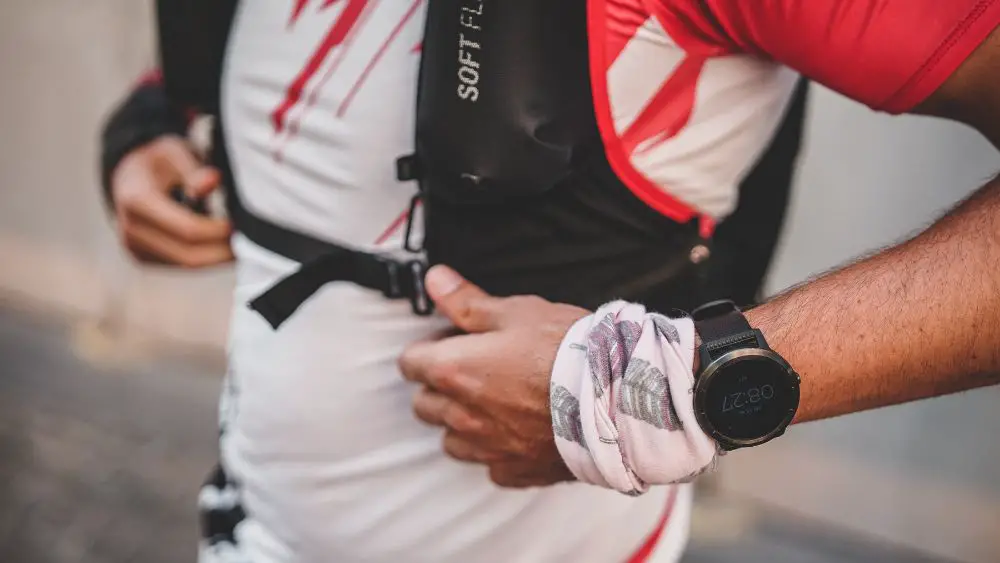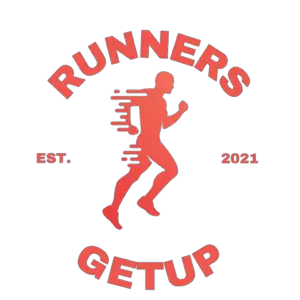This post contains affiliate links.

Packing can be a challenge for any sports traveler. Much more when participating in a long marathon which will push your body to the limits. As such, it is common for marathoners to forget what they need to bring due to nervousness. In this guide, I will provide a checklist for you to be ready for your race.
The main things to pack for a marathon event are your clothing, shoes, drinks, snacks, medical papers, and skin protection products. These are the essentials that should not be left behind in your packed goods. Let us dive deep into each of them:
1. Running Shoes
Your running shoes will be your greatest ally during the competition. It will protect your feet from the heat of the track, as well as the strain of running long distances.
Professor Iain Hunter, a researcher from Brigham Young University, even states that running shoes increase running efficiency due to absorbed impact from the soles. It helps improve running speeds and strides that are beneficial for marathoners.
When traveling, it is better to wear a different pair and pack your shoes in your carry-on. This is to avoid chances of lost baggage as well as damage to your gear.
Also, never use new shoes for race day, as it might cause injuries and sprains. It is suggested to break the shoes by training with it for a couple of weeks or more.
2. Race Day Clothes
Race day clothes are divided into three groups: pre, mid, and post-marathon clothing. Pre-race clothes are throwaways that are worn before the race starts. This is dependent on the weather, as cold temperatures might entail the use of sweatshirts to keep you warm.
On the other hand, mid-marathon clothes are those that you wear for the duration of the race. They are commonly comfy tank tops, sports bras (for summer runs), or layers of clothes with a light jacket (during the rainy or winter seasons).
Lastly, post-marathon clothes are meant to keep you cozy while your body recovers. I recommend having clean and dry shorts/pants, socks, shirts, and even a windbreaker if the cold is unbearable.
Do not shy away from bringing extra clothes for a marathon! You never know when you might need them.
Related post: Complete Marathon Gear Guide: What to Wear on Race Day?
3. Safety Pin
It never hurts to bring a couple of safety pins to properly attach your race bib to your top. After all, it serves as your sole identifier during the race, and a wardrobe malfunction might prove to be very annoying.
You might even help a fellow marathoner in affixing their bib. Camaraderie for the win!
4. GPS Device
A GPS Device, particularly a smartwatch or GPS watch, is a must-have for a marathoning event. First, it aids in tracking your progress during the race to ensure that you are not behind your goal time. Also, it helps you keep your pace at a certain threshold so you won’t gas out during the race.
Personally, I prefer using the Coros Pace 2 because of its weight and accuracy. Not to mention, its affordable price.
Related post: Do You Really Need A GPS Watch To Run? (Or Is a Phone Fine?)
5. Energy Snacks
Carbs and snacks go a long way in ensuring that your body performs its best. This is especially true for marathoners who will deplete their reserves in the 26.2 miles of grueling activity. As such, taking in carbohydrate-rich snacks even during the race is recommended.
If you prioritize ease of eating and chewing, then energy gels are great choices. On the other hand, if you think your body needs more reinforcement, then a banana or salty pretzel can help aid in dehydration.
These snacks are sources of glycogen also known as fuel for the muscles. They are sure to keep you in tip-top shape on all courses of the competition.
6. Sunscreen
Sunscreens will always be a must-have for any marathon runner. It does not matter whether you are a beginner or a pro, you must apply these all over your body when training and racing.
In research conducted by Dr. Ambros-Rudolph, it was found that marathon runners have an increased risk of malignant skin cancer due to exposure to UV rays. As such, they display exposure to sun spots, lesions, and burns more than any other athletes.
To prevent this, she recommends training in low sunlight environments as well as using water-resistant sunblock or sunscreens. These significantly increase skin health as well as reduce signs of aging. So, pack that extra sunscreen packet in your bag, and don’t shy away from using it!
7. Hydration Packs
Hydration can mean victory and defeat on the racetrack. After all, your fluids govern the way you run the race. It is important to have enough water and energy running around your body to regulate temperature and keep you going. Due to this, it never hurts to pack extra water containers that are lightweight or reliable.
Every mile or so, organizers of the marathon may hand out bottles of water for consumption. However, it is better to be ready for the worse case by bringing your own. You can also opt for sports drinks if you are used to having them during training.
Sports drinks contain glucose and sucrose which can also be alternatives for sugar reserves. Researchers even recommend consuming up to 1 liter of sports drinks with around 60 grams of carbohydrate for best performance.
Personally, I like using hydration packs in vests. They’re convenient and they don’t move around or fall when you’re running. But, there are a lot of other options for carrying your fluids such as a belt and a handheld water container.
Related post: 5 Best Ways To Carry Water Bottle and Phone While Running
8. Nip guards
Ever seen one of those photos online where runners’ nipples are bleeding? Seems painful right? Worry no more, because these can be prevented just by packing nip guards on your gear. Nip guards aid in lessening the friction against your sensitive parts during the run so that no abrasions occur. They even prevent chafing to give you a comfortable time.
While some might use band-aids for practical reasons, there are dedicated products out there built solely for marathoners. Also, wearing the perfect body fit can prevent this as loose clothes are the main suspect for wounds.
Jogger’s nipple, as they called it, can be avoided with little preparation and presence of mind.
Related post: Why Do Runner’s Nipples Bleed And How To Stop It
9. Medical Documents and ID
Let’s face it. As athletes, we must be prepared for the worst, no matter how paranoid we may seem. This is why it is important to bring our medical insurance documents wherever we go, specifically our cards. This will guarantee further protection from whatever you may encounter during the track.
Also, packing your medical certificates might be beneficial, especially for international events. Any sort of identification such as valid IDs is recommended in case you get into a sitch.
10. Sunglasses and Sweatband
Race day can get pretty sunny in some regions. This can get annoying especially if the sun is at an angle that hits your face. Packing up some sort of eye protection such as sunglasses can aid in not losing focus during the race.
If you sweat too much, then it is recommended to also bring a sweatband. Without it, your sunglasses will be riddled with moisture which can be an irritating experience.
A common mistake that beginner marathoners do is that they forget such gear since their race start early. Remember that a marathon could last for 6 hours.
Related post: Should I Wear Sunglasses While Running?
11. Toilet Paper/Tissues
As embarrassing as it may sound, toilet papers or tissues should be packed for a marathon. You never know when nature will call, so it’s better to be safe than sorry.
There will be portable restrooms around the track, but no one knows if the tissues will suffice. Many marathoners will opt to go to a restroom at some point due to the sports drinks/energy gels that they consume. As such, the place might not be in the best condition so using wet wipes to clean up is a good idea.
12. Running Vest/Waist Pack
You got all these tools to help you win the race. The question now is: where will you store them? Well, marathoners have two choices: running vests and waist packs. These gears will help you organize your bottles, IDs, band-aids, and even extra cash.
Running vests have the benefit of being close to the body (less bounce) and storing more gear. However, they might be heavier compared to waist packs. On the other hand, waist packs are smaller but this also means that you get to put fewer things.
As always, the choice depends on the runner’s needs and preferences.
Final Thoughts
Apart from getting your mind and body ready, your gear must also be all-set. Packing the things in this checklist is necessary if you’re a beginner so that you can run at your best during the event. However, you can get away with less if you’re already used to running marathons.
As always, presence of mind is the key to a successful marathon. Be wary of whatever may happen, and enjoy your race while being safe!
Read next: 7 Things You Should Do After Running a Marathon (Recovery Tips)
